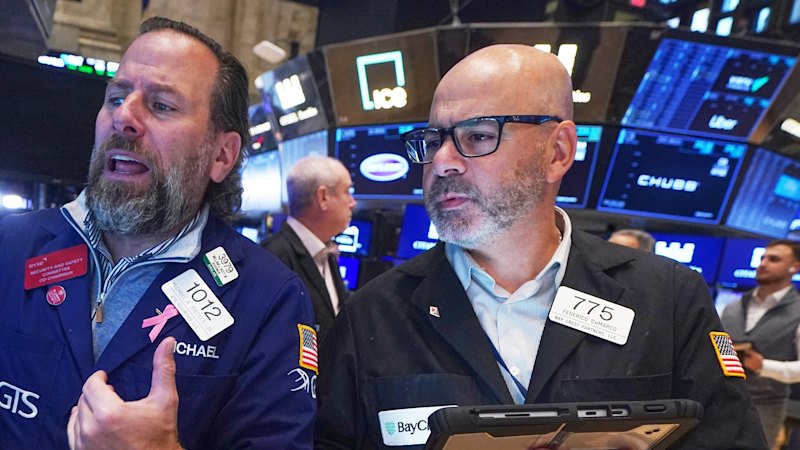
The Australian sharemarket began the week on a positive note, buoyed by Wall Street’s strong finish last week amid growing optimism over potential U.S. interest rate cuts. As of early afternoon on Monday, the S&P/ASX 200 index had climbed 81.4 points, or 1 percent, reaching 8497.9, with all 11 sectors showing gains. Notably, technology and materials sectors were among the top performers.
Mining stocks experienced a boost, with BHP rising 0.5 percent following its announcement that it would not pursue a takeover of Anglo American after preliminary discussions. This marks the second time in two years that BHP has backed away from acquiring Anglo. Meanwhile, Rio Tinto saw a 2.2 percent increase, and Fortescue Metals Group gained 1.4 percent. Gold miners also shone, with Northern Star Resources up 1.4 percent, Evolution Mining rising 2.1 percent, and Newmont Corporation advancing 1.7 percent. Rare earths miner Lynas Corporation surged 4.4 percent.
Mixed Performance in Financial and Energy Sectors
Financial stocks presented a mixed picture. Westpac Banking Corporation led the big four banks with a 1.1 percent increase, while Commonwealth Bank of Australia added 0.6 percent. However, National Australia Bank and ANZ Banking Group both edged 0.1 percent lower.
Conversely, energy stocks faced declines, with Woodside Energy dropping 1.2 percent, Ampol Limited down 0.2 percent, and Santos Limited retreating 0.5 percent. This sector’s performance contrasted with the overall market’s upward trajectory.
In a significant development, logistics group Qube Holdings announced a non-binding proposal from Macquarie Asset Management to acquire the company on behalf of its investor clients. The offer, valuing Qube at approximately $11.6 billion, represented a nearly 28 percent premium over Qube’s last closing share price, propelling its shares up 18.6 percent to $4.82.
Wall Street’s Volatility and Interest Rate Speculation
Last Friday, Wall Street experienced a volatile session, with the S&P 500 rallying nearly 2 percent before closing with a 1 percent gain. The Dow Jones Industrial Average climbed 493 points, or 1.1 percent, and the Nasdaq Composite rose 0.9 percent. These movements left the S&P 500 just 4.2 percent below its record high, despite enduring the sharpest hour-to-hour swings since April’s sell-off.
The market’s recent turbulence stems from two unresolved questions: whether prices for key assets like Nvidia and bitcoin have soared too high, and whether the Federal Reserve will continue cutting interest rates to stimulate the economy. Investors found some reassurance in a speech by John Williams, President of the Federal Reserve Bank of New York, who indicated potential for further rate adjustments.
“There is room for a further adjustment to interest rates,” Williams stated at a conference in Chile, hinting at a possible rate cut in December.
This statement, however, contrasts with other Fed officials who have expressed reservations about a December cut due to persistent inflation concerns. The resulting uncertainty has contributed to the market’s dramatic fluctuations.
AI and Cryptocurrency: Market Drivers
Technology stocks, particularly those linked to artificial intelligence, have been at the forefront of market movements. Nvidia, a key player in AI technology, saw its shares swing dramatically on Friday, ultimately closing with a 1 percent loss despite an initial gain. The company’s performance has been pivotal in shaping market sentiment, as investors weigh the potential profitability of AI investments.
Meanwhile, bitcoin experienced significant volatility, briefly plunging below $US81,000 before recovering to around $US85,000. This decline from nearly $US125,000 last month has brought the cryptocurrency back to levels seen in April, amid broader market jitters.
Despite these swings, the majority of stocks on Wall Street rose, with nearly 90 percent of the S&P 500’s constituents climbing. However, the outsized influence of major tech stocks like Nvidia often overshadows these broader gains.
Bond Market and Future Outlook
In the bond market, Treasury yields eased as traders anticipated potential Fed rate cuts. The probability of a December rate cut surged to nearly 72 percent from 39 percent the previous day, according to CME Group data. This expectation contributed to a decline in the yield on the 10-year Treasury note to 4.06 percent from 4.10 percent late Thursday.
Looking ahead, market participants will closely monitor Federal Reserve communications and macroeconomic indicators for further clues on interest rate policy. As the year-end approaches, the interplay between inflation concerns and economic growth prospects will likely continue to drive market dynamics.
The Market Recap newsletter provides a comprehensive wrap-up of daily trading activities. Subscribers can stay informed with updates delivered each weekday afternoon.







